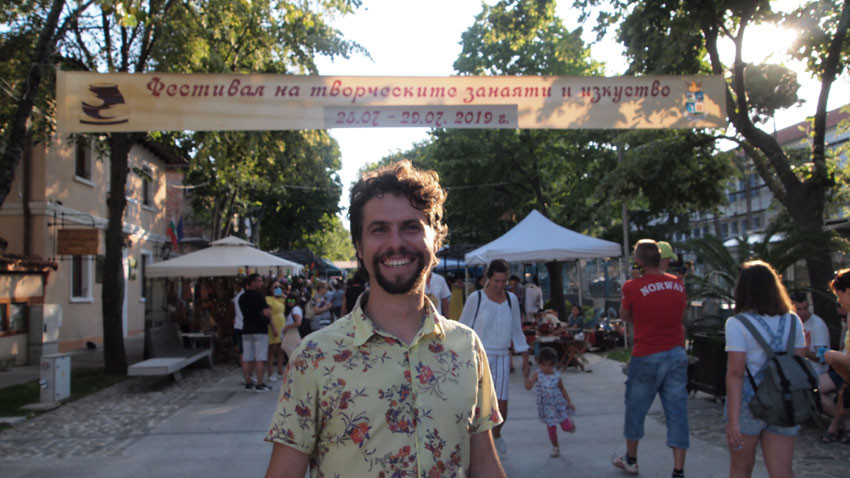Tsarevo, a small town in the southern portion of Bulgaria’s Black Sea coastline, is hosting an Arts and Crafts Festival for the 4th time.
Pavilions in the town’s centre house workshops and display works of art. Tourists are able to give free rein to their creative streak and join various creative activities, like pottery, wool felting, woodcarving, glass staining.

Besides the handicrafts of Bulgaria, other crafts coming from different cultures, have been gaining popularity with the combination of different traditions in a globalized world helping to preserve each one of them. That is why the festival in Tsarevo features a henna painting pavilion – an Indian tradition, adapted to Bulgaria, with the pictures in henna featuring Bulgarian embroidery and other traditional elements. Wholesome and delicious food, pleasant music, and lots of surprises – here is more about the festival from its organizer Luchezar Dimitrov:

“Handicrafts are a way of life. Once people develop an interest in a given handicraft, they live with their mentors, observing their way of life and the objects they craft every day – and learn how to live. So, besides “stealing the trade”, as we say, the apprentice “steals” the way of life as well.
The idea of the handicrafts festival is to bring people in contact with one another, to demonstrate how much work, how much inspiration goes into the making of the objects on show. They are the bond between the craftsmwen and the public. When there is an industry standing between the man in the street and the craftsman, this bond is severed, and the product loses its individuality. That is why at our festival we have workshops where anyone can come in contact and try their hand at different arts and crafts.”

 “I have been felting wool for five years, and I use ancient techniques – wet and dry felting,” says Margarita Cholakova, who is an animator by profession. “Wet felting is used mostly to make shawls, hats, clothes. Many colleagues, and not only in Bulgaria, make shoes. I use it as background for my paintings. Dry felting is another technique – the woolen yarns are woven into one another using a special notched needle. The difference is that wet felting is for bigger surfaces. Using a needle is much slower, there is always the risk of pricking your fingers, but in the end it turns out beautifully. I love to make toys out of felt.
“I have been felting wool for five years, and I use ancient techniques – wet and dry felting,” says Margarita Cholakova, who is an animator by profession. “Wet felting is used mostly to make shawls, hats, clothes. Many colleagues, and not only in Bulgaria, make shoes. I use it as background for my paintings. Dry felting is another technique – the woolen yarns are woven into one another using a special notched needle. The difference is that wet felting is for bigger surfaces. Using a needle is much slower, there is always the risk of pricking your fingers, but in the end it turns out beautifully. I love to make toys out of felt.

Wool has many different properties – it is antistatic, anti-allergic, moistureproof, proto-Bulgarians even made saddles out of it. It is a magnificent material.”
Photos: Ekaterina Ivanova
Minutes before the second and final reading, at the parliamentary budget and finance committee, of the state budget for 2026, the leader of the biggest party represented in parliament GERB Boyko Borissov halted the procedure and sent the draft bill..
Despite being in Bulgaria’s poorest region, the North-West, Vratsa Province ranks among the top three in the country for economic development. According to 2023 data from the National Statistical Institute (NSI), it shares third place with Varna on the..
Bulgarian artists will take part in the festive Christmas concert in Stockholm , organised with the European Commission's representation and embassies , the Bulgarian embassy in the Swedish capital announced on Facebook. The event is scheduled for 8..
Despite being in Bulgaria’s poorest region, the North-West, Vratsa Province ranks among the top three in the country for economic development. According..
Bulgarian artists will take part in the festive Christmas concert in Stockholm , organised with the European Commission's representation and embassies ,..
Minutes before the second and final reading, at the parliamentary budget and finance committee, of the state budget for 2026, the leader of the biggest..

+359 2 9336 661
